
Anime is hand-drawn and computer-generated animation originating from Japan. Outside Japan and in English, anime refers specifically to animation produced in Japan. However, in Japan and in Japanese, anime describes all animated works, regardless of style or origin. Many works of animation with a similar style to Japanese animation are also produced outside Japan. Video games sometimes also feature themes and artstyles that can be considered as "anime".

Hayao Miyazaki is a Japanese animator, filmmaker, and manga artist. A co-founder of Studio Ghibli, he has attained international acclaim as a masterful storyteller and creator of Japanese animated feature films, and is widely regarded as one of the most accomplished filmmakers in the history of animation.

Princess Mononoke is a 1997 Japanese animated epic historical fantasy film written and directed by Hayao Miyazaki and animated by Studio Ghibli for Tokuma Shoten, Nippon Television Network and Dentsu. The film stars the voices of Yōji Matsuda, Yuriko Ishida, Yūko Tanaka, Kaoru Kobayashi, Masahiko Nishimura, Tsunehiko Kamijo, Akihiro Miwa, Mitsuko Mori, and Hisaya Morishige.

Spirited Away is a 2001 Japanese animated fantasy film written and directed by Hayao Miyazaki, animated by Studio Ghibli for Tokuma Shoten, Nippon Television Network, Dentsu, Buena Vista Home Entertainment, Tohokushinsha Film, and Mitsubishi and distributed by Toho. Spirited Away tells the story of Chihiro "Sen" Ogino, a ten-year-old girl who, while moving to a new neighborhood, enters the world of kami. After her parents are turned into pigs by the witch Yubaba, Chihiro takes a job working in Yubaba's bathhouse to find a way to free herself and her parents and return to the human world.
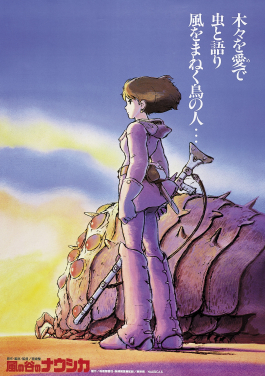
Nausicaä of the Valley of the Wind is a 1984 Japanese post-apocalyptic anime fantasy film written and directed by Hayao Miyazaki, based on his 1982 manga. It was animated by Topcraft for Tokuma Shoten and Hakuhodo, and distributed by Toei Company. Joe Hisaishi, in his first collaboration with Miyazaki, composed the score. The film stars the voices of Sumi Shimamoto, Gorō Naya, Yōji Matsuda, Yoshiko Sakakibara and Iemasa Kayumi. Set in a post-nuclear futuristic world, it tells the story of Nausicaä (Shimamoto), the teenage princess of the Valley of the Wind who becomes embroiled in a struggle with Tolmekia, a kingdom that tries to use an ancient weapon to eradicate a jungle full of giant mutant insects.

Castle in the Sky, also known as Laputa: Castle in the Sky, is a 1986 Japanese animated fantasy adventure film written and directed by Hayao Miyazaki. It was produced by Isao Takahata, animated by Studio Ghibli, and distributed by the Toei Company. In voice acting roles, the original Japanese version stars Mayumi Tanaka, Keiko Yokozawa, Kotoe Hatsui, and Minori Terada. The film follows orphans Sheeta and Pazu, who are chased by government agent Muska, the army, and a group of pirates over Sheeta's crystal necklace on their way to Laputa, a mythical castle flying in the sky.

Haibane Renmei is a 2002 Japanese anime television series based on an unfinished dōjinshi manga series by Yoshitoshi Abe, The Haibanes of Old Home. The 13-episode series was directed by Tomokazu Tokoro, animated by Radix, and produced by Yasuyuki Ueda. It first aired on Fuji TV between October and December 2002, and was later broadcast on Animax Asia in English and French under the title Ailes Grises.
A magical girlfriend, exotic girlfriend, monster girlfriend, nonhuman woman, or supernatural lover, is a female stock character often associated with romantic comedy anime and manga series, and is sometimes considered a genre of its own, or as the leading lady of the "fantastic romance" genre, which combines the fantasy and romance genres.

Kiki's Delivery Service is a 1989 Japanese animated fantasy film written, produced and directed by Hayao Miyazaki, based on the 1985 novel by Eiko Kadono. It was animated by Studio Ghibli for Tokuma Shoten, Yamato Transport and the Nippon Television Network, and stars the voices of Minami Takayama, Rei Sakuma and Kappei Yamaguchi. The story follows Kiki, a young witch who moves to the port city of Koriko with her cat Jiji and starts a flying courier service.
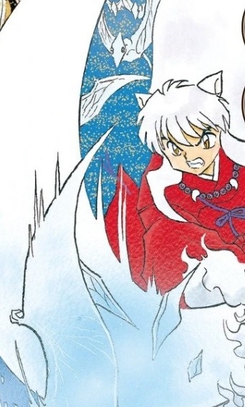
Inuyasha is a fictional character and the titular protagonist of the manga series of the same name, created by Rumiko Takahashi. He is a half-demon, half-human from the Sengoku period of Japan. He later appeared in the anime sequel series Yashahime.
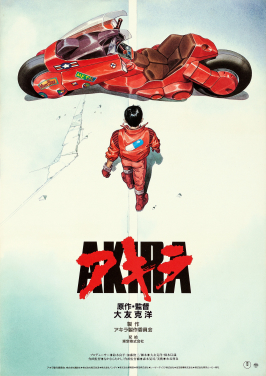
Akira is a 1988 Japanese animated cyberpunk action film directed by Katsuhiro Otomo, produced by Ryōhei Suzuki and Shunzō Katō, and written by Otomo and Izo Hashimoto, based on Otomo's 1982 manga of the same name. Set in a dystopian 2019, it tells the story of Shōtarō Kaneda, the leader of a biker gang whose childhood friend, Tetsuo Shima, acquires incredible telekinetic abilities after a motorcycle accident, eventually threatening an entire military complex amid chaos and rebellion in the sprawling futuristic metropolis of Neo-Tokyo.
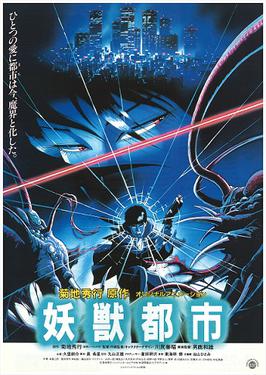
Wicked City is a 1987 Japanese adult animated dark fantasy action horror film produced by Video Art and Madhouse for Japan Home Video. Based on Black Guard, the first novel of the Wicked City series by Hideyuki Kikuchi, the film is the solo directorial debut of Yoshiaki Kawajiri, who also served as the character designer, storyboard artist, animation director and a key animator.
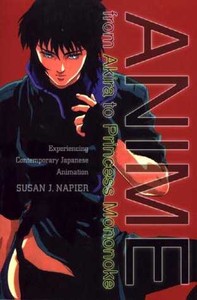
Anime from Akira to Princess Mononoke: Experiencing Contemporary Japanese Animation is a scholarly book which uses techniques of literary criticism on anime by Susan J. Napier published in 2001 by Palgrave Macmillan. It discusses themes of shōjo, hentai, mecha, magical girlfriend and magical girl anime using select titles. It also discusses some aspects of the English-speaking anime fandom. The book has been translated into Japanese, and had four editions, before a revised fifth edition was published in 2005 as Anime from Akira to Howl's Moving Castle: Experiencing Contemporary Japanese Animation.

Belldandy is a fictional character in the popular anime and manga series Oh My Goddess!. She was created by Kōsuke Fujishima as one of three Goddesses who come to Earth to reside with Keiichi Morisato, and she serves as his love interest. She is depicted as a beautiful and powerful young woman, with strong nurturing tendencies, a trusting and innocent character, and an extremely kind heart. Belldandy is accidentally summoned from heaven by Keiichi in order to grant him a wish and stays when Keiichi wishes for "a goddess like you to be by my side forever". The stories follow Belldandy as she builds a relationship with Keiichi, using her powers to help both Keiichi and his friends while keeping her true identity a secret.
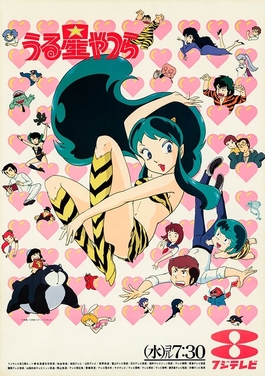
Urusei Yatsura is a Japanese anime television series produced by Kitty Films that aired on Fuji Television from October 14, 1981, to March 19, 1986. It is based on the manga series of the same name by Rumiko Takahashi and was co-produced by Pierrot until episode 106, and Studio Deen for the rest of the series. The series was licensed in North America by AnimEigo in 1992, and released the series English subbed on VHS in October that year. Their license expired in 2011, and is currently licensed by Discotek Media.

Nausicaä, renamed Princess Zandra in the Manson International Warriors of the Wind English dub, is a fictional character from Hayao Miyazaki's science fiction manga series Nausicaä of the Valley of the Wind and his anime film of the same name. Her story is set in the future on a post-apocalyptic Earth, where Nausicaä is the princess of the Valley of the Wind, a minor kingdom. She assumes the responsibilities of her ill father and succeeds him to the throne over the course of the story. Fueled by her love for others and for life itself, Nausicaä studies the ecology of her world to understand the Sea of Corruption, a system of flora and fauna which came into being after the Seven Days of Fire.
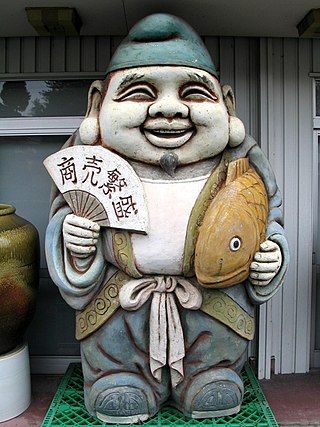
Shinto is frequently a theme in Japanese popular culture, including film, manga, anime, and video games. Shinto religion is at the core of Japanese culture and history and as such greatly affects the outcome of pop culture in modern Japan.

From Impressionism To Anime: Japan As Fantasy And Fan Cult In The Western Imagination is a scholarly book by Susan J. Napier, published in 2007 by Palgrave Macmillan. It connects Japanophilia, Orientalism, Japonisme and modern anime and manga fandom.
Hiroyuki Kitakubo is a Japanese director, animator, and screenwriter.

















